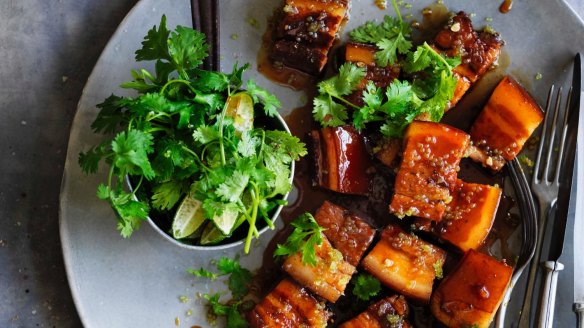Pork overtakes beef in consumption in Australia

Australians are putting more pork on their forks, as national beef consumption slides to a record low, but chicken remains king of the kitchen.
The latest statistics released by the Australian Bureau of Agricultural and Resource Economics show beef has been bumped to the third favourite meat, trailing after pork and chicken. The report, released in the past fortnight, crunched data from 2015.
It found that the average Aussie now consumes 27.9kg of pork per year, more than double the amount of 11.7kg in 1975.
Comparatively, beef trails behind by 300 grams, with 27.9kg per person in 2015, a massive slide down from 62kg in 1975 (beef consumption peaked in 1977, with a whopping per person average of 70.3kg).
Beef's loss has been chicken's gain (to the farmers at least), with our love of chook reaching a record 45.3kg in 2015. Back in the 1970s, it ranged from 13 to 18 kilograms per person per year.
The report shows that over 10 years, our beef consumption fell by roughly 10kg and our lamb consumption by 3.5kg, while pork went up by 4.5kg and chicken flew the coop with a 7.6kg increase.
So how are our national eating habits different to 2005? The report shows that over 10 years, our beef consumption fell by roughly 10kg and our lamb consumption by 3.5kg, while pork went up by 4.5kg and chicken flew the coop with a 7.6kg increase.
Mitch Edwards from Australian Pork said that he's been amazed by the growth in home pork consumption, crediting a "perfect storm" of the national boom of interest in home cooking and food television, product championing by chefs through the PorkStars chef campaign, and simple marketing strategies.
"We had a very simple message with the six-two-two campaign; for pork steaks, cook for six minutes on one side, two on the other, and then let rest for two," Edwards said.
"It had cut through and really resonated. Grandmothers told us for so long that pork had to be really heavily cooked, which damaged the eating experience – now people are happy to cook it a bit pink."
People previously ate roast pork with crackling a few times a year, but it's evolved as an every day meal, from bacon and eggs, to ham sandwiches, he said, and through popular dishes like ramen, caramelised pork belly, bahn mi, and porchetta.
"In Europe and Asia, pork is the most consumed meat, but in Australia, there used to be a big barrier to people understanding of how to deal with pork and cook pork," Edwards said.
"As a nation, we've become better cooks, more experimental and confident, and pork really lends itself to so many cultural dishes."